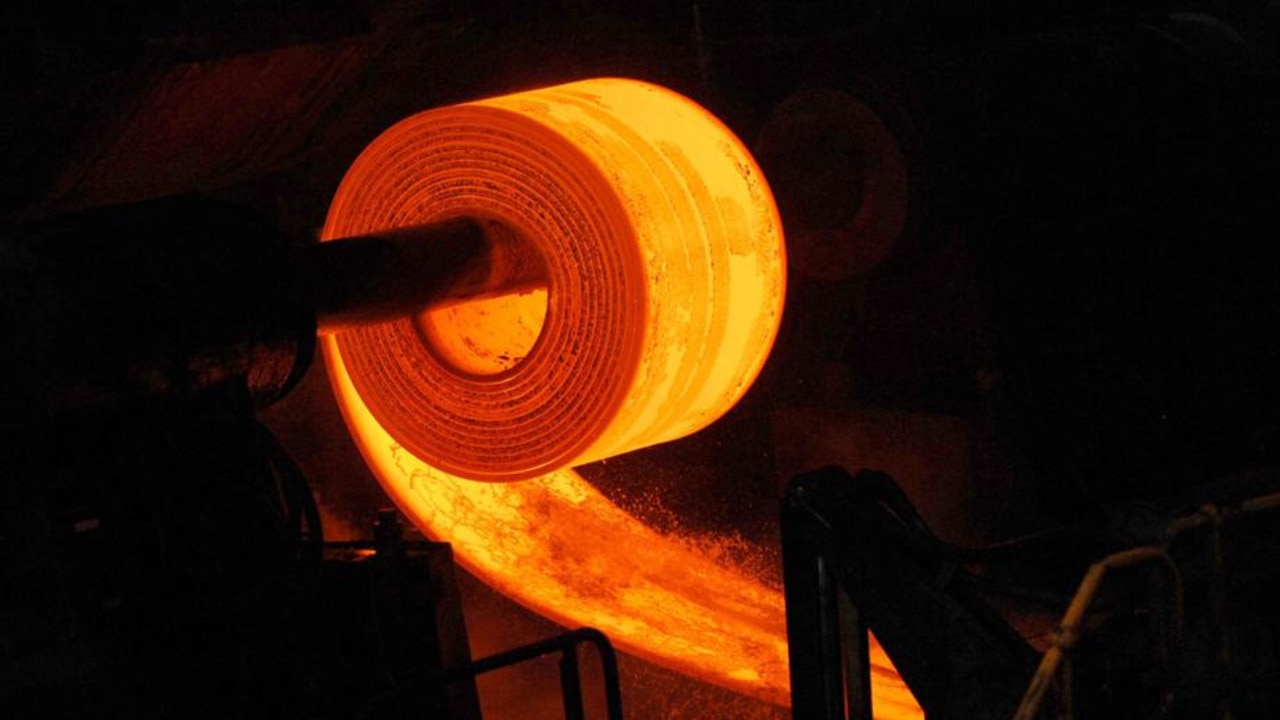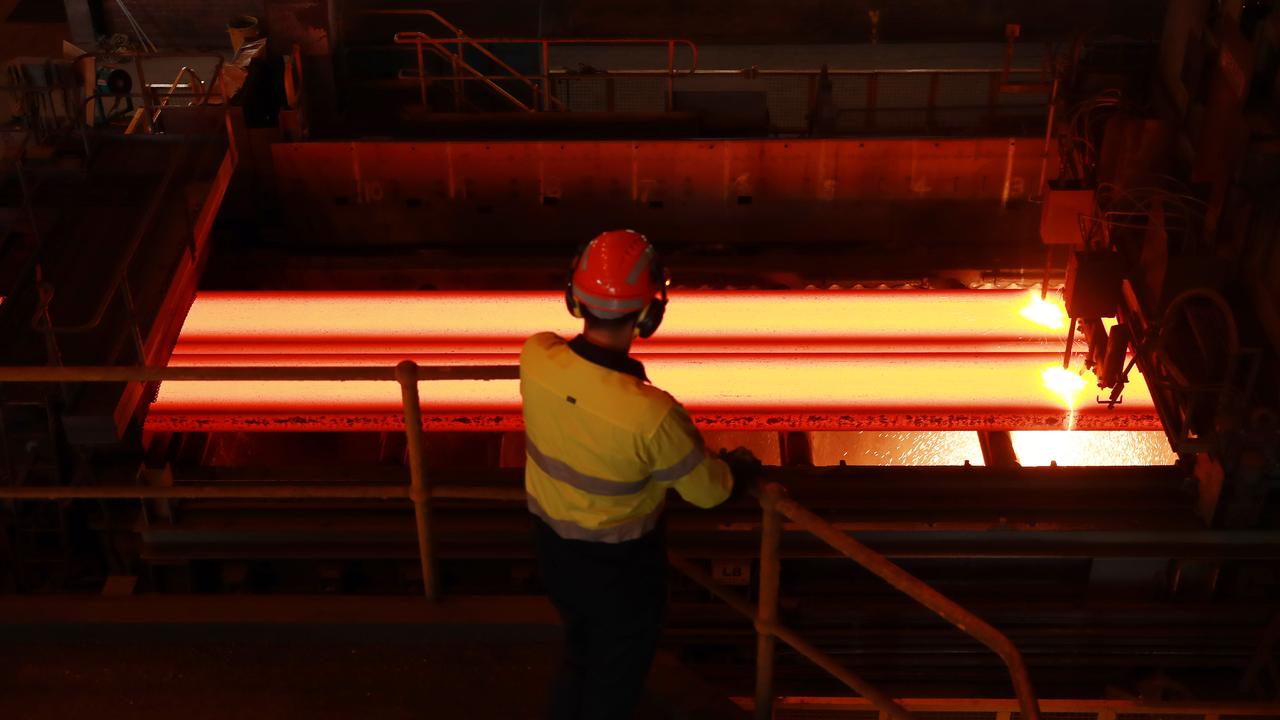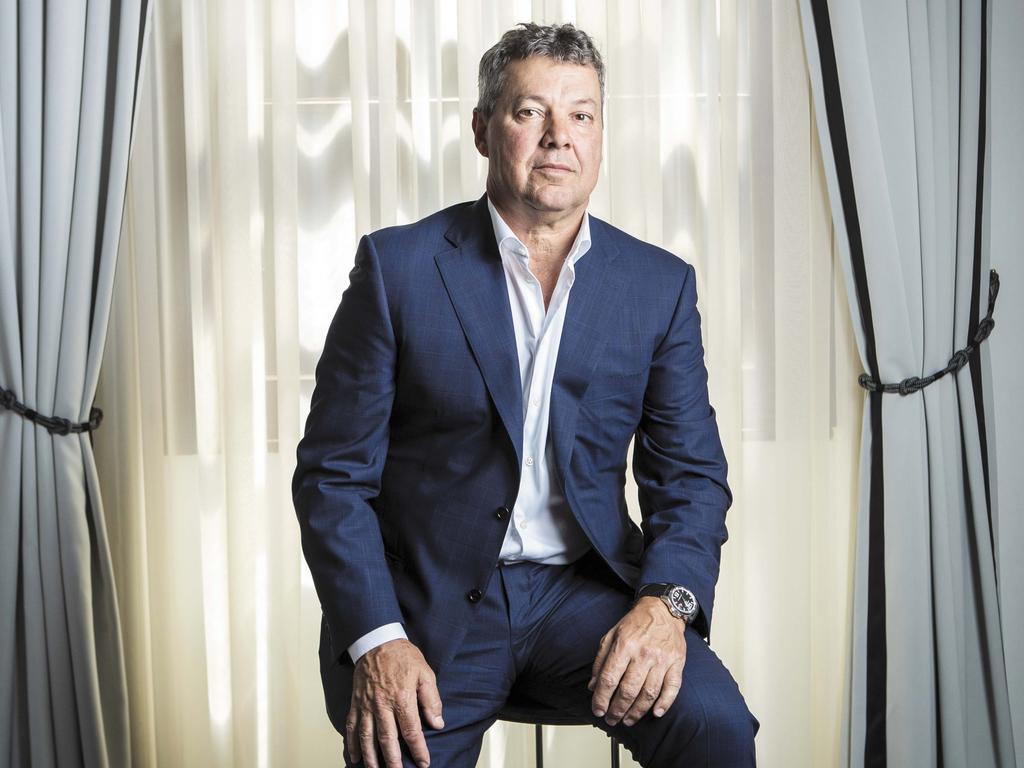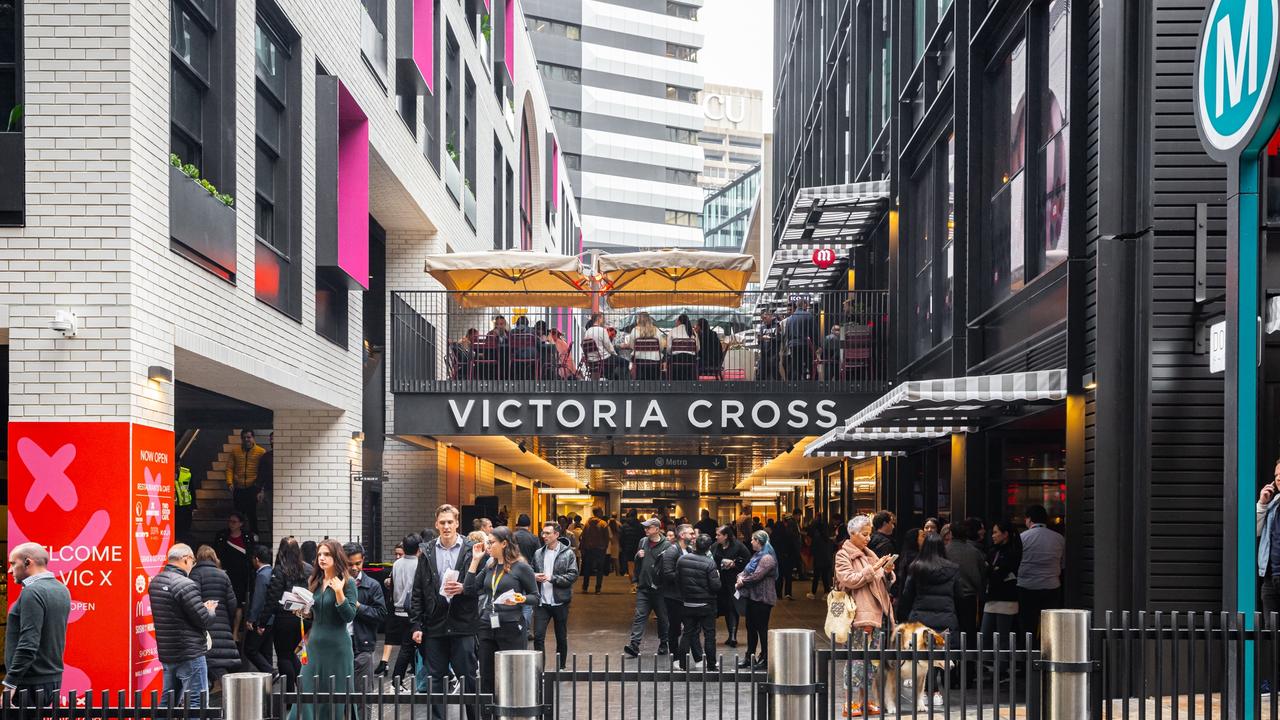BlueScope boss opts for attack over defence under plan to win the steel tariff war
Exposed to a trade war on one side and cheap steel dumping by China on the other, the boss of BlueScope goes for attack as the best form of defence.

Business
Don't miss out on the headlines from Business. Followed categories will be added to My News.
Mark Vassella’s BlueScope will be a net beneficiary from Donald Trump’s tariff war, regardless of which way it goes. Although it’s clear that not all of those benefits are going to flow through to Australia.
That’s why the BlueScope chief executive is preparing for disruption across the rest of the steelmaking world and wants to pull $200m of costs out.
It’s still early days, but around half of the savings will come from manufacturing and distribution, while Vassella is also looking at finding savings from suppliers.
There’s no guidance yet on how it will impact jobs. He’s also wisely pulling back on planned investment in some areas, but that is more about getting a handle on the brave new steel landscape.
Vassella has spent much of the past few years reinforcing the BlueScope balance sheet, and his large hold in the US market means he is insulated from Trump’s 25 per cent steel tariffs – even if Australia doesn’t get its mooted reprieve.

BlueScope’s North Star mill in Ohio pumps out 3 million tonnes of steel a year, which is more than BlueScope’s flagship Port Kembla plant in NSW.
North Star stands to get all the upside of a protected market and has already seen a 20 per cent jump in previously under pressure benchmark North American pricing since Trump was sworn in as President last month.
Those North American sales – mostly to carmakers and the construction sector – pale in comparison to the 300,000 tonnes BlueScope ships annually from Port Kembla to the US.
At the same time, most of BlueScope’s US exports are to itself, with sales of steel products that are finished off at the North Star mills before going to the American market.
“It’s really a 300,000 tonnes versus a 3 million tonnes argument,” Vassella says about the threat of US tariffs. “That’s the story for us.”
Of course, it’s a little more nuanced than that, with Vassella bracing for plenty of pain back home.
There are 110 million tonnes of Chinese steel produced annually, much of this is for the domestic market, but if the Chinese economy slows further this capacity will quickly find its way here and at a deep discount, Vassella fears.
This could interrupt the momentum he’s been getting locally, including booming sales of value-added Colorbond products.
That’s why Vassella wants a more assertive anti-dumping regime. BlueScope and its cash-strapped rival Infrabuild are both big users of the anti-dumping program, although official investigations can be painstaking and take more than a year. By that stage, the financial damage has been done.
Even with the benefit of higher US prices, all this disruption comes at a vulnerable time for BlueScope. It has an ambitious spending program underway, with nearly $1.5bn of commitments coming down the line in the next 12 months.
Rightly, these projects are designed to lower costs and make the steelmaker more productive and the big ones have already started, including the massive reline of the No.6 blast furnace at Port Kembla.
Others include untangling steelmaking operations at North Star and the construction of a new metal coating line in Sydney’s west.

The spending saw BlueScope’s net cash holdings of $88m fall to the lowest level in years and compares to more than $360m it was sitting on this time last year, and more than $700m two years ago.
Vassella points out BlueScope has long been planning for this moment and that’s precisely why he had been sitting on higher levels of cash in recent years. His challenge will be to make sure too much cash doesn’t go out the door at once.
BlueScope’s board has made his job tougher after locking itself into a commitment to send at least 50 per cent of BlueScope’s free cash flow back to shareholders. This has seen interim dividends rise 20 per cent despite top line earnings fall.
Even so, with the uncertainty in how the US market will track – particularly with the ownership of the giant US Steel up in the air – Vassella is prudently holding off on some investments there, including upgrading a cold rolling and metal coating line. This deferral will deliver expected savings of up to $300m over the next 18 months. There’s also sales of surplus land holdings in NSW coming and this will bring more cash in the door.
The CEO is comfortable taking on net debt of up to $800m in this cycle, given his improved outlook in US earnings.
Vassella is following the rule in steelmaking that you have to spend money to make productive money, and the gains from these investments are expected incrementally start flowing through to the bottom line from 2027.
He expects $500m in additional annual earnings by the end of the decade, including $150m in Australian operations. There could be more upside to come from higher sustained US prices under a Trump presidency. This will deliver a clear earnings tailwind for BlueScope and was helping to drive the share rally on Monday.
This isn’t Vassella’s first tariff fight. Even as Australia won an exemption under Trump’s last set of steel tariffs, all steelmakers got a boost as the world economy was upended by the Covid pandemic and prices surged from the supply squeeze.
This time it’s wholly different, with BlueScope’s Australian flank the one exposed to a trade war.
The lesson for Vassella the first time around was politics moves slower than markets. His response is the right one: Make BlueScope as fit as it possibly can be.
–
Lendlease test
It’s been almost a year since Lendlease’s chief executive Tony Lombardo struck his peace deal with investors that largely involved selling off billions in assets quickly and bringing the long underperforming property developer back home.
Whether Lombardo can make the deal stick while proving Lendlease has the right stuff to grow locally remains to be seen.
Investors are prepared to give him the benefit of doubt – for now.

Lendlease’s total shareholder returns are down 9 per cent over the past 12 months. That compares with a market that has seen total returns up by more than 16 per cent.
Granted, Lendlease is operating in a high interest rate environment that is working against all property players, but after slimming down around the world, and exiting nearly $2.2bn of businesses here and offshore, Lombardo needed to deliver a set of predictable accounts.
This will be to show his plan to strip Lendlease down to funds management, development and construction, is working.
His first half results didn’t do this. It wasn’t helped by the surprise of an upfront earnings loss from two troubled and unnamed big ticket projects where Lendlease is the client. There’s also a shrinking development pipeline, and delays on other projects and soaring costs. These might be standard property problems in a tough market, but at Lendlease they all take on a heightened importance.
At the same time, the new Victoria Cross flagship office tower has come onto the North Sydney market at exactly the wrong time, prompting another $14m writedown on the project. While Sydney’s commuters may have embraced the new metro line that stops underneath the building, corporates need convincing to make the move across the Harbour Bridge.
Lombardo knows his job is a long way from being done, with $500m of businesses to be sold off in coming months and the complicated exit of UK-based construction operation to be worked through.
Debt is much too high at this point in the cycle, with gearing sitting at 27 per cent. This leaves Lendlease little margin for error. Gearing will come down as more business are sold or as cash comes in, but won’t move down substantially to the target range of 5 to 15 per cent until June next year.
In the near term, Lombardo and Lendlease will be locked in an endless cycle of meeting the short-term targets the property play has set down for itself including assets sales and earnings forecasts.
Lombardo acknowledges there’s a little way to go before a clean and simplified Lendlease emerges, that shareholders have been demanding. The priority is to wind down the remaining international businesses to keep bringing capital back home.
Investment management offers the best near-term growth, while the problems in construction have been isolated. Development remains a financial 2027 story with projects in New York and Los Angeles completing with the pipeline to be built up from there. The Australian development pipeline is running at $10bn, with opportunities in the market.
Lombardo says Victoria Cross is moving in the right direction, with talks underway for more tenants to move in that will see the massive project leased at the critical 50 per cent-plus mark.
“From an outlook, 2027 is looking very strong for the group,” Lombardo tells The Australian.
The key is whether investors will be prepared to wait it out that long.
Originally published as BlueScope boss opts for attack over defence under plan to win the steel tariff war







